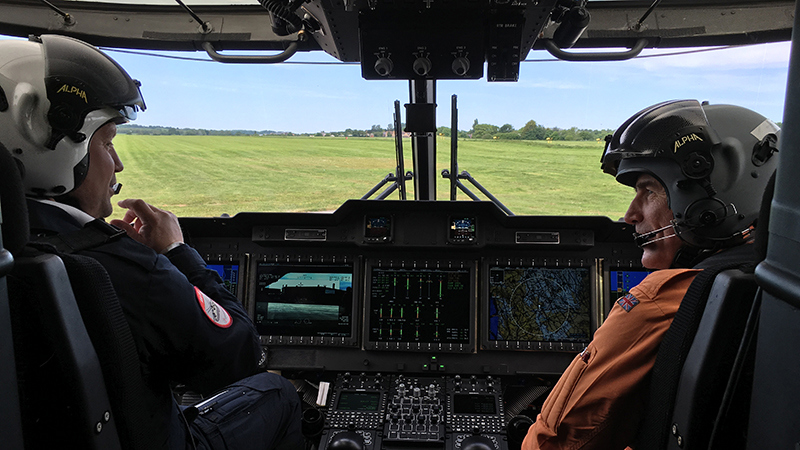'Firefox'-Styled Neuro-Avionics Are Likely Still Decades
Away
Fighter aircraft avionics have come so far, so fast that it's hard to
realize that only a century ago, the first U.S. Army Air Corps was doing battle
over northern France in open cockpits equipped with shockingly rudimentary
controls. Today, fighters like Lockheed Martin's F-22 Raptor are so
fully-equipped with advanced head-up display technologies that one wonders
whether neuro-activated flight controls are just around the next
cloud.
For now, however, such neuro-tech remains the realm of the 1982 Clint
Eastwood film "Firefox," which features a fictional Soviet MiG-31 stealth
aircraft that fires its weapons merely upon the pilot "thinking" such a
command.
It's pretty likely that someone is working on something very similar,
aviation historian Donald Nijboer, author of "Fighting Cockpits: In the Pilot's
Seat of Great Military Aircraft from World War I to Today," tells me. But he
says such advanced neuro-avionics are likely still decades away, even if it's
debatable whether such tech would actually save time in the
cockpit.
Despite uncertainty about the future of warplane avionics, Nijboer's new
book offers a fascinating take on the development of such technology. With
high-resolution color photos of more than 50 historic cockpits by photographer
Dan Patterson, "Fighting Cockpits" successfully gives even a casual reader a
real feel for what facing the elements, adversaries and crude technology
actually meant for World War I-era pilots.
Wood-and-canvas open-cockpit planes like the Blériot XI cockpit
"instrumentation" consisted of a watch and a map of the flight route rolled onto
a scroll, a control stick, rudder pedals, and no throttle, Nijboer
writes.
"All rotary engines were controlled by means of a "blip" switch, which had
two settings: flat out or stopped," writes Nijboer. He notes that airspeed and
altitude were left to the pilot's judgment. World War I dogfights subjected
pilots to such extremely high G-forces, he writes, they caused blackouts, and in
some severe cases burst blood vessels behind the eyes.
"Even when they began to add more controls and instruments later in the
war, the pilots still relied more on what they felt through their hands and feet
- the sound and smell of their engine and the slipstream on their face," said
Nijboer.
Although today's fighter pilots are masters of their universe, they would
likely struggle in a primitive World War I-era cockpit.
"A well-trained pilot of today would have his hands full trying to fly a
World War I Sopwith Camel," said Nijboer.
What has surprised Nijboer most about the evolution of warplane
cockpits?
"How the cockpit always seemed to be an afterthought in the design
process," said Nijboer. "Most instruments and controls were placed where they
could fit and not in any real logical or ergonomic order."
As Nijboer points out in his book, in the 1920s, as aviation horsepower
increased so did cockpit instruments and controls for engine throttles, fuel
mixtures, oxygen systems, and engine gauges.
These new cockpits were often at odds with the needs of the pilots; since
logistics for the aircraft's various systems, writes Nijboer, were prioritized
to mechanically-link the plane's vital systems.
"Most cockpits looked as if the instruments and controls had been tossed in
to land where they may; forcing pilots to reach and blindly grope for
poorly-placed controls," Nijboer writes.
It wasn't until the end of the decade, Nijboer writes, that fighter
aircraft had enough instruments to "fly blind." In 1929, Lt. James "Jimmy"
Doolittle of the U.S. Army Air Corps flew a Consolidated NY-2 Husky trainer -
replete with a gyroscopic compass, an artificial horizon instrument, and a
precision altimeter - to successfully perform the world's first "blind-flying
takeoff and landing."
Most recently, Nijboer is a fan of the F-22 Raptor which made its combat
debut just a couple of years back. With its heads-up display and six liquid
crystal display (LCD) panels, the F-22 writes Nijboer, gives pilots a
first-look, first-shoot, first-kill capability.
"Modern fighter pilots I spoke with described themselves as more battle
managers than stick and rudder fighter jocks," said Nijboer. "These modern jets
are designed for beyond visual range combat. There's little need for a
tight-turning agile fighter."
The future of over-the-horizon tech in cockpits?
"Today's pilots are limited by how many Gs they can withstand before
blacking out; it's around 9," said Nijboer. "In the future a single fighter
pilot could control a squadron of drones capable of performing any number of
maneuvers a human pilot could not."
Nijboer says neuro-technology research is already underway on hands-free
tech to control fighter aircraft. I guess a neurological cockpit would be the
ultimate, he says, but as an F-22 pilot told me "the Raptor can outsmart you,
it's that good."
Such technology would surely boggle the minds of World War I-era pilots.
But perhaps "Fighting Cockpits" is most impressive for reminding us that the
continuing development of military aircraft technology may have paradoxically
kept us out of a third world war.




















